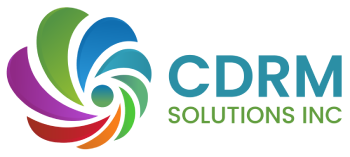
Electronic Document Management System (EDMS)
Technology is in a continuous phase of development. This development has affected every field of life. Virtual document management software is a result of this developed technology. The document management system is designed to reduce the usage of paper. DMS collects, stores, and manages all the documents. All you have to do is write a keyword, and you will find the document.
The document management software records all versions of documents, making it easier to check the changes. For digital document management, several software is developed to work on computers. DMS is considered Content Management, Document Imaging, Enterprise Content Management, Digital Asset Management, and Record Management systems.
History Of Document Management
Document management started to emerge as a proper software in 1980. Vendors began to work on document management software with versatile aspects. This document management software worked with paper documents, including pictures and photographs.
With time there were changes in the document management software. The system started to deal with electronic documents. Earlier electronic document management systems could only support a few file formats; later, developers came up with ideas for image document formats and developed some collaboration tools in the software. The software was also able to keep the documents secure, manage the workflow, and audit the budget document files.
With time DMS developed and was connected to the cloud storage system. This made it easier to recover the document if you accidentally deleted it. This makes storage easier and more convenient. With time the EDM started to support the HTML format. The HTML format can be used to publish files or store documents. Storage of HTML allows a simpler workflow as the web easily detects it.
Components Of Document Management Software
Document management software compromises components. These components are following;
- Metadata
- Integration
- Capture
- Data Validation
- Indexing
- Storage
- Retrieval
- Distribution
- Security
- Workflow
- Collaboration
- Versioning
- Searching
- Federated Search
- Publishing
- Hard Copy Reproduction
Here is a detailed view of all the components of DMS.
Metadata
Some digital document management systems (DMS) may automatically extract metadata from electronic documents, such as the date and name of the user storing it, or ask the user to do so. The extracted text can help users find documents by indicating likely keywords or offering full-text search functionality, or it can be utilized independently.
Integration
An application programming interface (API) employing open standards such as ODMA, LDAP, WebDAV, and SOAP or RESTful web services is often accessible for several software applications such as workflow management and content management systems. Many document management systems attempt to integrate document management functionality directly into other applications.
Capture
Optical character recognition (OCR) software is frequently used to convert digital images into machine-readable text, whether integrated into the hardware or stand-alone software. Optical mark recognition software is sometimes utilized to extract values from checkboxes or bubbles.
Data Validation
Data validation rules can check for document failures, missing signatures, misspelled names, and other errors before they are imported into the DMS, making them easier to deal with in the future.
Indexing
Indexing can be as simple as keeping track of unique document IDs. Still, it can also take a more complicated form, such as offering categorization through metadata or word indexes taken from the documents’ text. The design of an index topology or scheme is an important aspect of quick retrieval and is one of the most important aspects of modern computer technology.
Storage
Document storage frequently involves document management, such as where the documents are held, how long, document migration from one storage medium to another, hierarchical storage management, and document destruction.
Retrieval
Accessing a specific document is a basic concept but can be highly sophisticated and powerful in the electronic setting. Some systems allow you to define a Boolean expression with numerous keywords or sample sentences that should appear in the document’s content. Previously created indexes may aid this type of query’s retrieval, or it may need more time-consuming searches through the contents of the documents.
Distribution
A document that is suitable for dissemination must be in an unchangeable format. The document’s master copy is rarely utilized for dissemination; instead, an electronic link to the record is more prevalent. Additional requirements must be satisfied if a document is to be transmitted electronically in a regulated context, including assurances of traceability and versioning.
Security
In the United States, ISO 9001 and ISO 13485 standards define how the document control process should be handled. A rights management module in a document management system allows an administrator to restrict access to documents depending on their kind to certain persons or groups of people. Document marking at printing or PDF production is critical to prevent tampering or inappropriate usage.
Workflow
Some document management systems include a workflow module or interact with workflow management software. A user must see the document in a manual workflow and pick who to deliver it. An administrator can design a rule that regulates the movement of a document through an organization, such as an invoice passing through the approval procedure before being forwarded to the accounts-payable department.
Collaboration
Collaboration should be inherent in an EDMS. In its basic form, collaborative EDMS should allow documents to be retrieved and worked on by an authorized user. Other users should block access while work is performed on the document. Advanced forms of collaboration act in real-time, allowing multiple users to view and modify copies simultaneously.
Versioning
Versioning is the practice of checking documents in and out of a document management system, allowing users to go back to prior versions and pick up where they left off. It is beneficial for documents that change over time and need to be updated, yet it may be required to refer to or go back from an earlier version.
Searching
Using template attributes or a full word search, you may discover documents and folders. Searching for documents may be done using a variety of qualities and their content.
Federated Search
This is the ability to expand search capabilities to include results from many sources, such as several DMSes within an organization.
Publishing
Any simple document manipulation may inaccurately mislead or upset its users and readers. Proofreading, peer or public review, authorizing, printing, and approving are all steps in publishing. The published document should be in a format that is read-only or portable but not readily edited without specialized expertise or equipment.
Hard Copy Production
A document management system’s supported output devices and reproduction capabilities should be examined because document and image reproduction is frequently required.
Conclusion
Document Control Software is now a standard way of storing and managing documents. After a proper review, these document software are now properly certified and are a part of every business and company.

